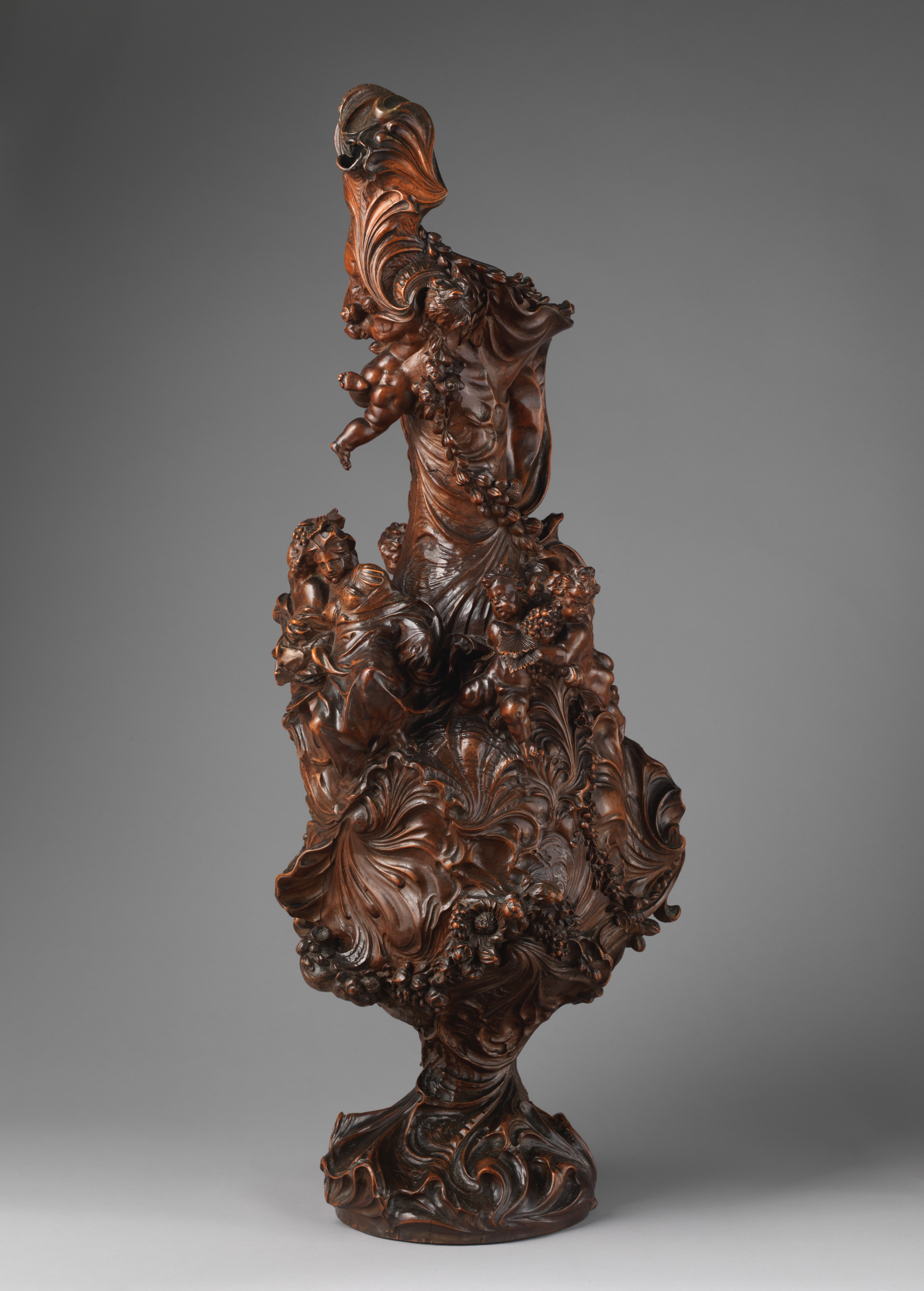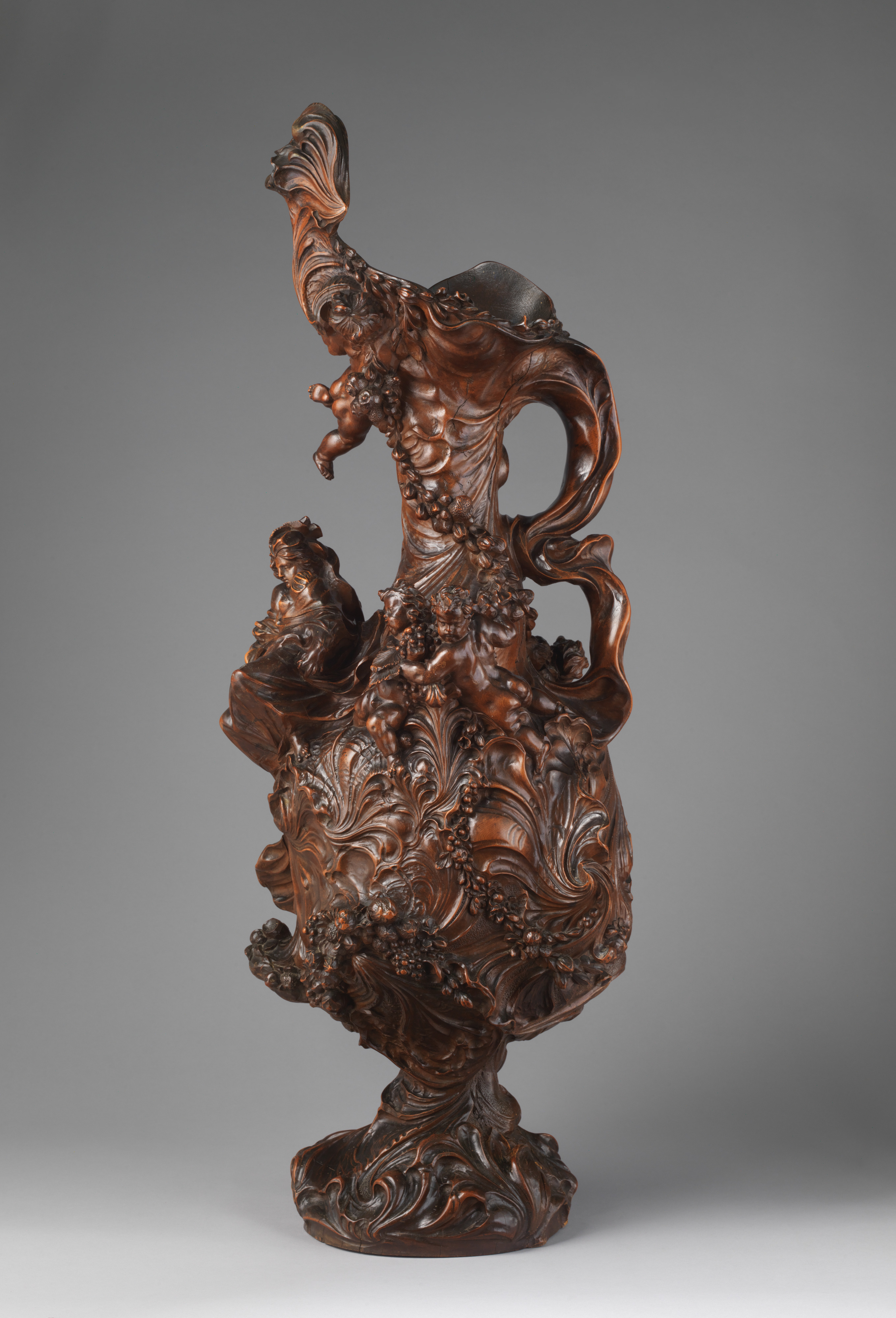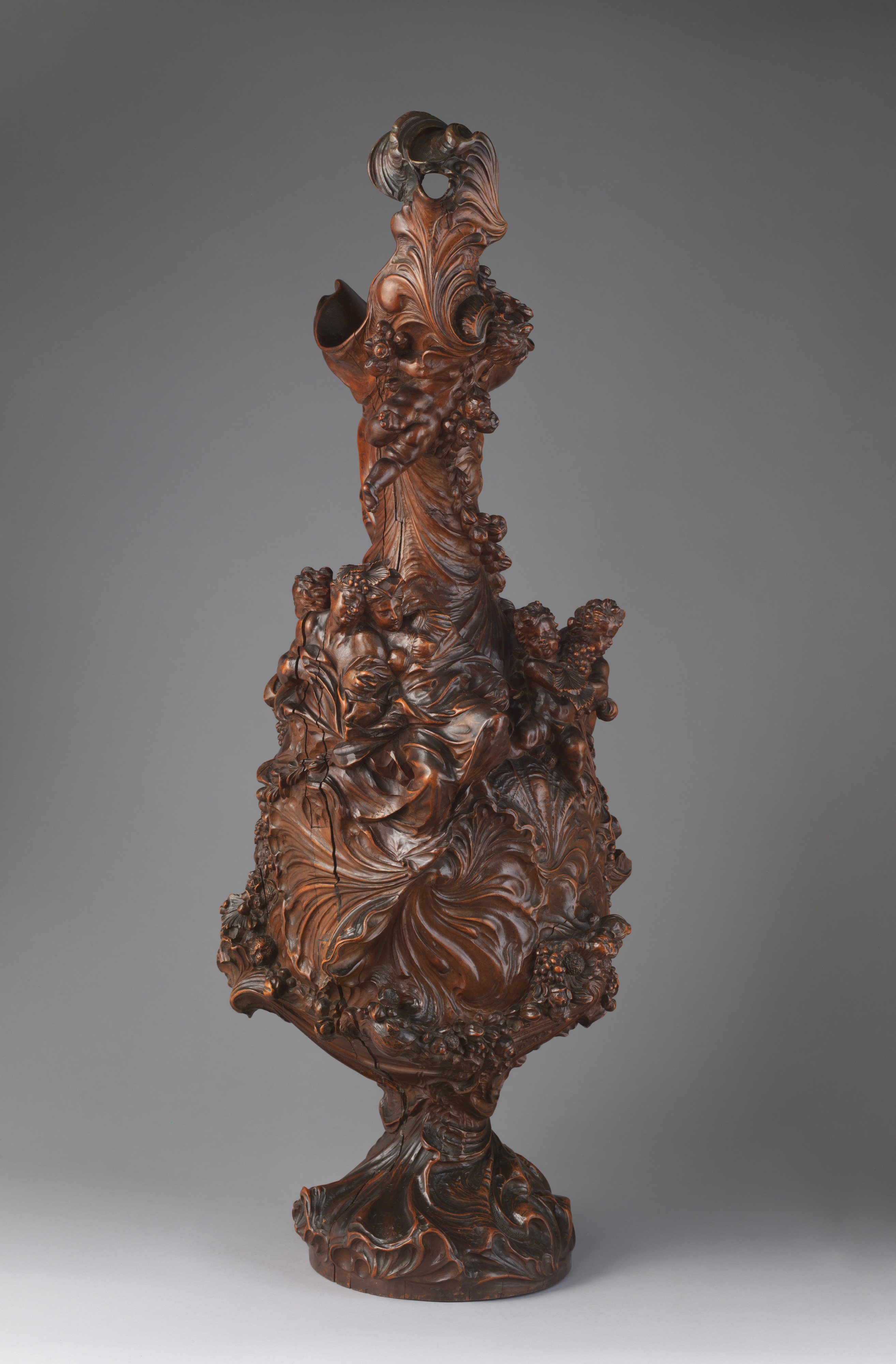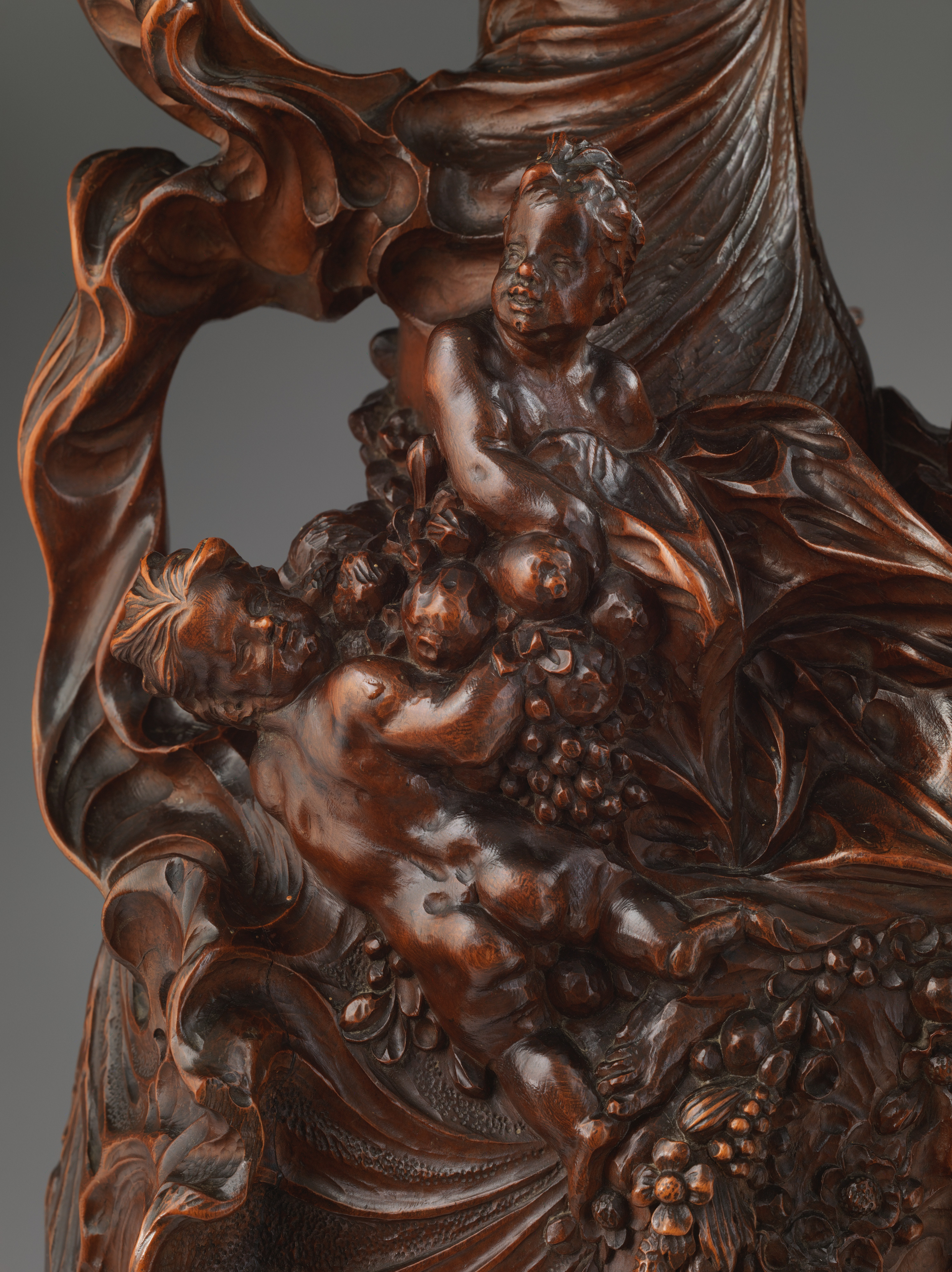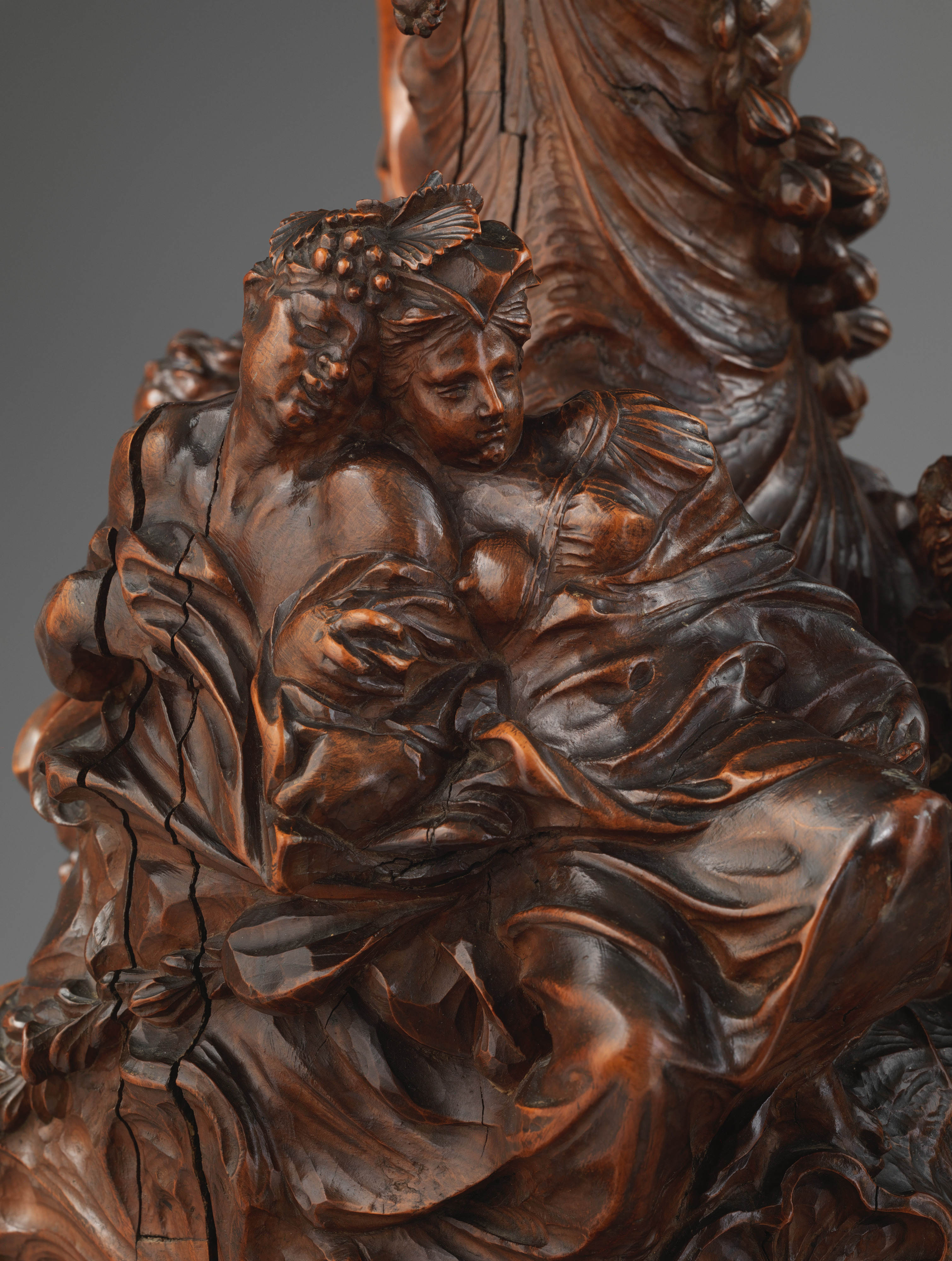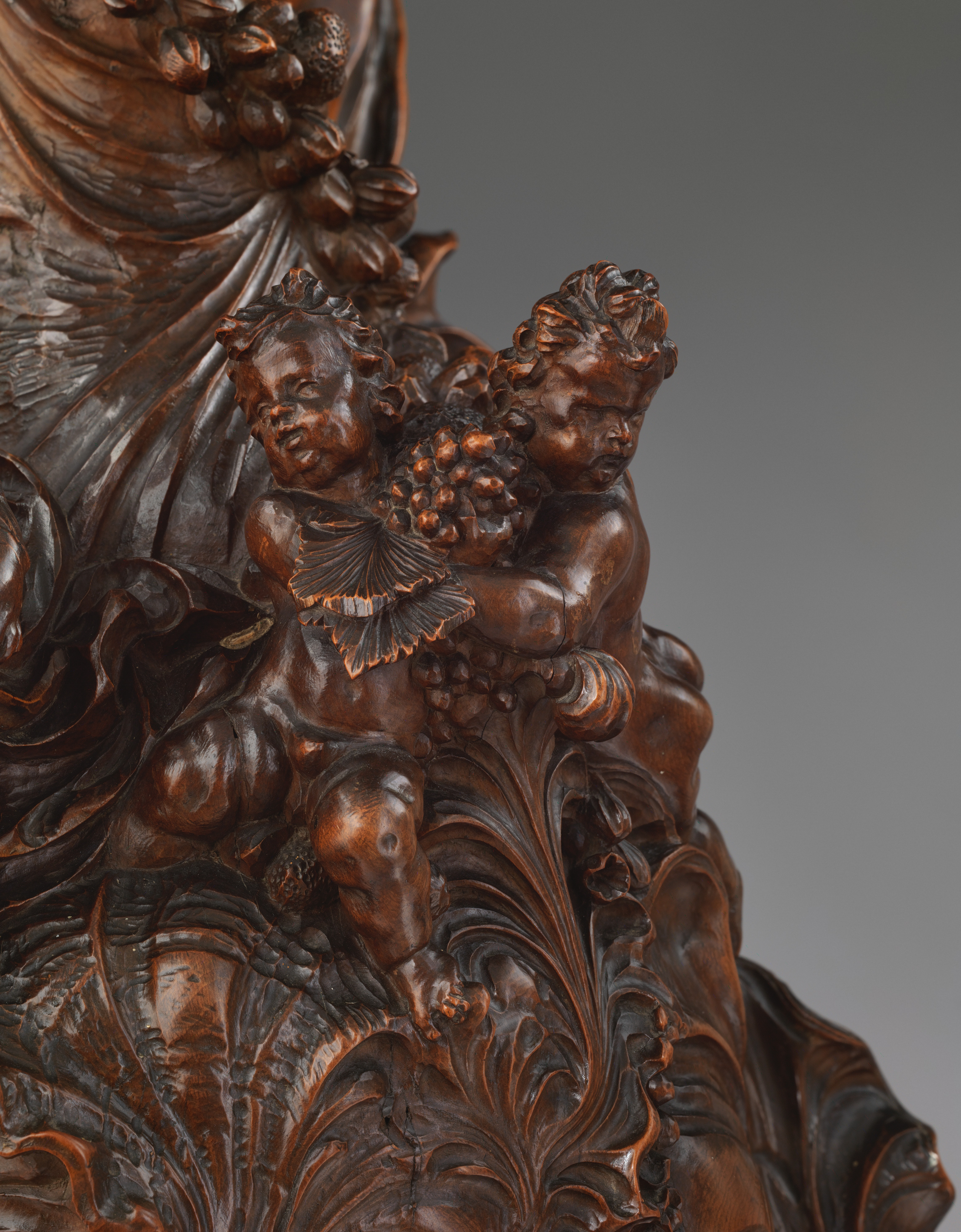Decorative ewer
Composed of several pieces of alder wood, this highly inventive ewer with its slender neck, double handle and exuberant spout, is a marvel of virtuoso carving. Following the tradition of designs for ornamental vases by seventeenth-century artists such as Jean le Pautre or Claes Jansz Visscher, the ewer's profile is enveloped by a multiplicity of decorative elements. The putti, garlands of fruit and flowers, and large sinuous foliage recall the spirited and fluid style of Flemish carving as expressed in elaborate sculpted pulpits and the balustrades of grand staircases. The reclining figure in the center, crowned with vines, and his female companion may well be Bacchus and Ceres, while the playful putti on the sides may be alluding toVenus. If so, the ewer could be an illustration of a famous emblem: "Sine Cerere et Baccho, friget Venus" (without food and drink, Venus is left in the cold). The ewer has not yet yielded all its secrets; was it, for instance, part of a larger decorative ensemble to furnish a stately diningroom or perhaps a model to be executed in silver? Neither is it known to whom the name Henricus Ioseph W…, inscribed in ink underneath the base, refers.
Due to rights restrictions, this image cannot be enlarged, viewed at full screen, or downloaded.
This artwork is meant to be viewed from right to left. Scroll left to view more.


